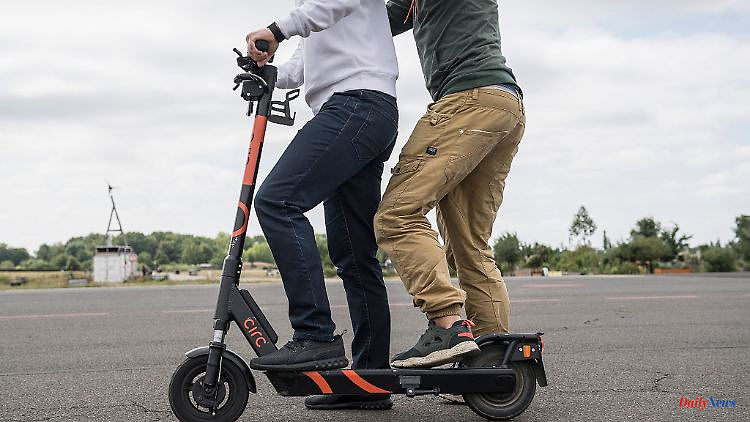The alcohol limits for electric scooters are the same as for cars. The driver's license is therefore at risk when driving on blue skies - but does that also apply to passengers with their hands on the handlebars?
Anyone who is drunk and has their hands on the handlebars as a passenger on an electric scooter is also considered a driver and can be punished accordingly. It doesn't matter whether you steer left or right or just hold on to it. This is shown by a judgment of the district court of Oldenburg (Az.: 4 Qs 368/22). The ADAC points this out and adds that driving in pairs is prohibited and a fine of ten euros is due here.
In the case in question, two people drove through the city on an e-scooter at four o'clock at night - the passenger held on to the handlebars. A police patrol stopped the two and took an alcohol test. A blood test revealed 1.2 per mille in the person behind.
A preliminary investigation followed, which resulted in the passenger being fined and having his driver's license revoked for drunk driving. On the other hand, the person concerned lodged a complaint. He admitted that he had his hands on the handlebars and was holding them, but he didn't want any steering movements.
This argument was unsuccessful in the district court. Accordingly, simply being held while driving constitutes steering or driving a vehicle within the meaning of the Criminal Code (paragraph 316). The court describes holding on without steering as steering - namely in a straight line.
And if both are holding on to the handlebars, controlled steering is only possible if both riders work together. So here the scooter was moved in an "accomplice" by both - regardless of whether, as here, only the person in front sets the pace. It is sufficient for the person behind to operate part of the technical equipment.
With 1.2 per thousand, the man had also exceeded the limit of absolute unfitness to drive (1.1 per thousand). The withdrawal of the driver's license was legal.












